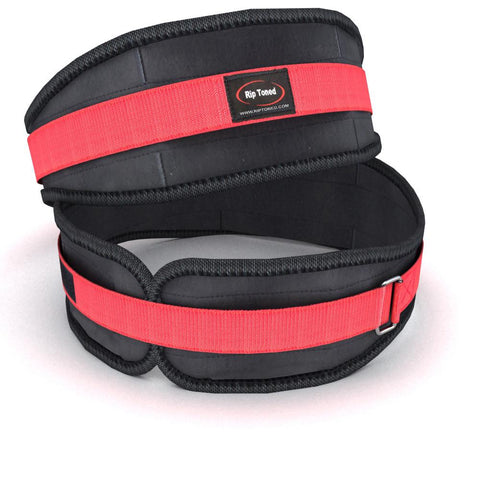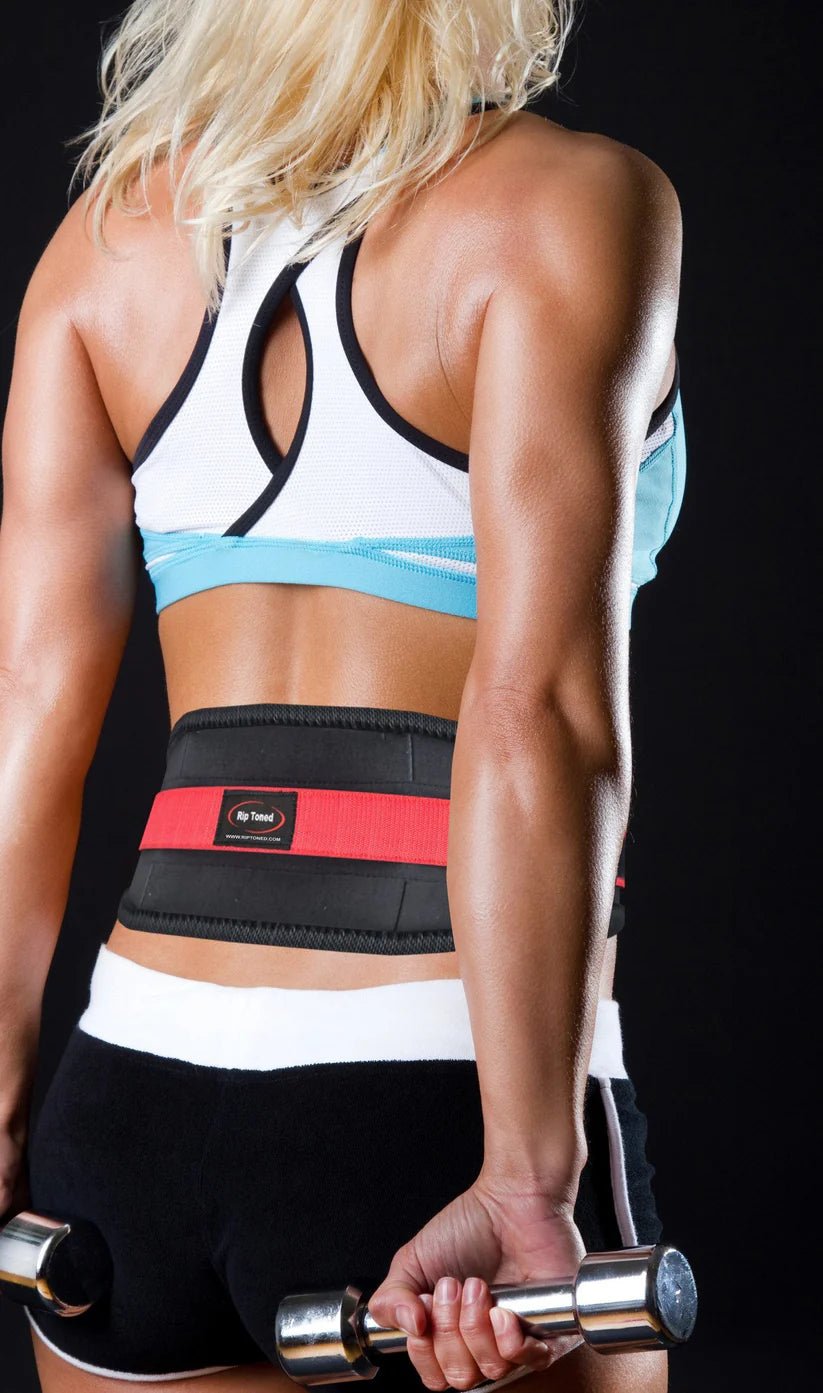In the realm of strength training, lifting belts have emerged as essential gear for both amateur and professional lifters. A weightlifting belt plays a crucial role in enhancing performance and safety, particularly when lifting heavy weights.
By increasing intra-abdominal pressure, these belts provide additional support to core muscles, helping stabilize the spine during strenuous lifts. Powerlifting belts, known for their robust design, are often chosen for their ability to withstand intense lifting sessions.
Meanwhile, velcro belts offer convenience and ease of use, appealing to those who prefer quick adjustments. As a staple in weightlifting routines, these belts not only boost confidence but also contribute to safer, more effective workouts.
Types of Weightlifting Belts and Their Materials
There are various types of weightlifting belts available in the market, each designed to serve a specific purpose. Some popular options include leather powerlifting belts, nylon velcro belts, and foam-padded belts.
Leather powerlifting belts are made from high-quality materials such as genuine cowhide leather, making them durable and long-lasting. These belts provide maximum support and stability for heavy lifts and are often preferred by professional powerlifters. On the other hand, nylon velcro belts are lightweight and easy to use, making them a favorite among CrossFit enthusiasts and functional fitness athletes. They offer an adjustable fit with their strong velcro closures, allowing for quick adjustments during workouts.
Foam-padded belts, also known as weightlifting belts with a contoured design, are ideal for beginners or those recovering from injuries. They provide moderate support while still allowing for proper movement and form during lifts.
Furthermore, relying solely on a belt for support can hinder the development of core muscles, leading to a reliance on the belt for stability. Therefore, it is important to use a weightlifting belt in moderation and also incorporate exercises that strengthen core muscles.
Benefits of Using Weightlifting Belts
Apart from providing support and stability, weightlifting belts offer various other benefits that make them a staple in strength training routines. Some of these benefits include:
- Reduced risk of injury: As mentioned earlier, weightlifting belts help stabilize the spine during heavy lifts, reducing the risk of back injuries. They also promote proper lifting form by reminding lifters to engage their core muscles and maintain a neutral spine position.
- Increased intra-abdominal pressure: Wearing a belt increases intra-abdominal pressure, which can lead to better blood circulation and oxygen supply to working muscles. This can improve endurance and performance during intense workouts.
- Protection for weak or injured areas: For individuals with previous back injuries or weaker areas, a weightlifting belt can provide additional support and protection during exercises that put a strain on those areas. This allows them to continue training safely and effectively.
- Boost in confidence: Putting on a weightlifting belt can give lifters an extra boost of confidence, especially when attempting new personal bests or competing. The added sense of security and stability can help lifters push past their limits and achieve their goals.
While there are many benefits to using a weightlifting belt, it is important to note that they should not be relied upon as the sole source of support during lifts. It is still crucial to maintain proper form and engage core muscles for maximum results and injury prevention.
Purpose of Weight Lifting Belt in Different Sports
Weightlifting belts are not only used in traditional weightlifting exercises, but they can also be beneficial in various other sports and activities.
In powerlifting, a weightlifting belt is almost always worn during the squat, deadlift, and bench press to provide additional support for heavy lifts. In strongman competitions, athletes can also benefit from the use of a weightlifting belt when performing events like the yoke carry or atlas stones.
In CrossFit, weightlifting belts are often used during Olympic lifts, such as the snatch and clean and jerk, to help maintain proper form and prevent injury. They can also be useful during high-intensity workouts that involve lifting weights.
Outside of strength training, weightlifting belts can also be beneficial in sports that require explosive movements, such as football and basketball. The added stability and support from the belt can help athletes generate more power and improve their performance.
How to Choose the Right Belt for Your Needs
When it comes to selecting a weightlifting belt, it is important to consider your specific needs and preferences. Some factors to keep in mind include the type of material, width, and closure of the belt.
For heavy lifting and maximum support, leather powerlifting belts are recommended due to their durability and stiffness. Velcro belts may be more suitable for those looking for convenience and ease of use during workouts.
The width of the belt also plays a role in its effectiveness. Generally, wider belts offer more support but can limit the range of motion. It is important to find a balance between support and mobility when choosing the right width.
Finally, the closure system should also be considered. Buckle closures are more secure but may take longer to adjust, while velcro closures offer quicker adjustments but may not be as secure. Ultimately, the right belt for you will depend on your personal preferences and needs.
Tips for Proper Use and Maintenance of a Weightlifting Belt
To maximize the benefits of using a weightlifting belt, it is important to use and maintain it properly. Here are some tips to keep in mind:
- Always wear the belt snugly around your waist, just above the hip bones.
- Engage your core muscles while wearing the belt to ensure proper form and effectiveness.
- Do not rely solely on the belt for support; continue to strengthen core muscles through targeted exercises.
- Make sure to clean and air out your weightlifting belt regularly to prevent bacteria buildup.
- Avoid excessive bending or folding of the belt, as this can damage its structural integrity.
By following these tips, you can get the most out of your weightlifting belt and enhance your training experience. Remember, a weightlifting belt is a valuable tool, but it is not a substitute for proper form and technique.
Is Size Important for Weightlifting Belts?
Yes, size does matter when it comes to weightlifting belts. A properly fitting belt is crucial for its effectiveness and safety during lifts. The general rule of thumb is that the belt should be snug enough to provide support but not too tight that it restricts breathing or movement.
It is also important to note that weightlifting belts are not one-size-fits-all. Different brands and styles may have varying sizing guidelines, so it is important to refer to the specific measurements provided by the manufacturer.
If you are unsure about your belt size, it is best to try different sizes before making a purchase. A well-fitting weightlifting belt can make all the difference in your training and performance.
Potential Drawbacks and Misconceptions
Despite the benefits of weightlifting belts, there are also some potential drawbacks and misconceptions surrounding their use. Some lifters may believe that wearing a belt will automatically lead to lifting heavier weights or that it can prevent all types of injuries. However, proper form and technique should always be prioritized over-relying on a belt.
Additionally, excessive reliance on a weightlifting belt can hinder the development of core muscles, leading to instability and an increased risk of injury when not using the belt. Therefore, it is important to use a weightlifting belt in moderation and continue to strengthen core muscles through targeted exercises. And maintain good posture even when not wearing the belt.
FAQs
What is the primary purpose of a weight belt during training?
A weight belt is primarily used to provide support to the lower back and increase intra-abdominal pressure, which helps stabilize the core during heavy lifting. This stabilization can allow lifters to handle more weight safely, enhancing performance in exercises like squats and deadlifts.
Can wearing a lifting belt improve my performance in overhead presses?
Yes, wearing a lifting belt can enhance performance in overhead presses by supporting the spine and core muscles. This support allows for better posture and more efficient force transfer, enabling you to lift more weight with improved stability.
Are there any health risks associated with wearing weight belts, such as increased blood pressure?
While weight belts are beneficial for support and stability, they can lead to a temporary increase in blood pressure due to the increased intra-abdominal pressure. It's essential to use them correctly and avoid over-tightening to minimize any potential adverse effects.
How do Olympic weightlifting belts differ from regular weight belts?
Olympic weightlifting belts are typically narrower and more flexible than standard powerlifting belts. This design allows for greater mobility and range of motion, which is crucial during dynamic lifts like the snatch and clean and jerk while still providing adequate support.
Conclusion
In conclusion, weight lifting belts serve as a valuable tool in enhancing both performance and safety during heavy lifting sessions. By providing crucial support to the core and stabilizing the spine, they allow lifters to handle more weight confidently. Choosing the right type of belt, whether powerlifting or Olympic weightlifting, and using it correctly is essential to maximize benefits and minimize risks.
While weight belts help increase intra-abdominal pressure and protect against injuries, they should not replace proper technique and core muscle development. Integrating weight belts thoughtfully into your training routine can lead to significant gains, but always prioritize balanced training to maintain overall strength and stability.

Click Here to Learn More About the Rip Toned Lifting Belt. Discover the purpose of a weightlifting belt and how it can enhance your workouts.

